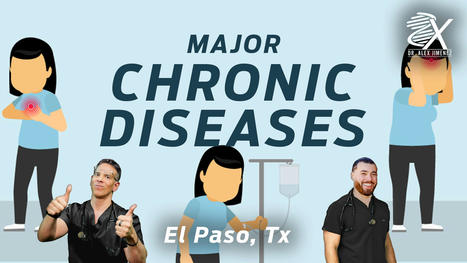Introduction
Dr. Alex Jimenez, D.C., presents how metabolic connections are causing a chain reaction to major chronic diseases in this 2-part series. Many factors often play a role in our health and wellness. It can lead to overlapping risk factors associated with pain-like symptoms in the muscles, joints, and vital organs. Part 2 will continue the presentation on metabolic connections with major chronic diseases. We mention our patients to certified medical providers that provide available therapy treatments for individuals suffering from chronic conditions associated with metabolic connections. We encourage each patient when it is appropriate by referring them to associated medical providers based on their diagnosis or needs. We understand and accept that education is a marvelous way when asking our providers’ crucial questions at the patient’s request and acknowledgment. Dr. Jimenez, D.C., makes use of this information as an educational service. Disclaimer
How Inflammation Affects The Body
Dr. Alex Jimenez, D.C., presents: So here you have a lean set of adipocytes on the left, and then as they start to plump up with more cellular weight, you can see those macrophages, the green boogies come around looking, saying, “Hey, what’s going on here? It doesn’t look right.” So they are investigating, and this causes local cell death; it’s just a part of the inflammatory cascade. So there is also another mechanism happening here. Those adipocytes are not just getting plumper by accident; it’s often related to a calorie surfette. So this nutrient overload damages the endoplasmic reticulum, leading to more inflammation. What these cells and the adipocytes are trying to do is protect themselves from glucose and lipo toxicity.
And the whole cell, the adipocyte cell, is creating these caps that are trying to say, “Please stop, we can’t take any more glucose, we can’t take any more lipids.” It’s a protection mechanism known as insulin resistance. It’s not just some random thing happening. It is the body’s way of trying to prevent glucose and lipotoxicity. Now that the inflammation alarm is occurring more than just in the adipocytes, it’s getting systemic. Other tissues and organs are starting to feel the same burden of the calorie surfette, causing inflammation and cell death. So glucose and lipotoxicity look like fatty liver when dealing with the liver. And you can also have it just like fatty liver progresses to cirrhosis with hepatocyte death. The same mechanism that’s happening in muscle cells. So our skeletal muscle cells specifically see cell death after inflammation and see fatty deposition.
The best way to think about it is, for example, the cows raised for food consumption and how they have marbled. So that’s the fatty deposition. And in humans, you can think about how people become sarcopenic as they become more and more insulin resistant. It’s the same phenomenon when body tissue tries to protect itself from glucolipotoxicity, causing a local inflammatory response. It becomes an endocrine response when it starts targeting other tissues in the periphery, whether the liver, muscle, bone, or brain; it’s just whatever is happening; they’re in the visceral adipocytes that can occur in other tissues. So that’s your paracrine effect. And then it can go viral, if you will.
The information herein is not intended to replace a one-on-one relationship with a qualified health care professional, licensed physician, and is not medical advice. We encourage you to make your own health care decisions based on your research and partnership with a qualified health care professional. Our information scope is limited to chiropractic, musculoskeletal, physical medicines, wellness, sensitive health issues, functional medicine articles, topics, and discussions. We provide and present clinical collaboration with specialists from a wide array of disciplines. Each specialist is governed by their professional scope of practice and their jurisdiction of licensure. We use functional health & wellness protocols to treat and support care for the injuries or disorders of the musculoskeletal system. Our videos, posts, topics, subjects, and insights cover clinical matters, issues, and topics that relate to and support, directly or indirectly, our clinical scope of practice.* Our office has made a reasonable attempt to provide supportive citations and has identified the relevant research study or studies supporting our posts. We provide copies of supporting research studies available to regulatory boards and the public upon request. We understand that we cover matters that require an additional explanation of how it may assist in a particular care plan or treatment protocol; therefore, to further discuss the subject matter above, please feel free to ask Dr. Alex Jimenez or contact us at 915-850-0900.
Dr. Alex Jimenez DC, MSACP, CCST, IFMCP*, CIFM*, ATN*
email: coach@elpasofunctionalmedicine.com
Licensed in: Texas & New Mexico*



 Your new post is loading...
Your new post is loading...










Dr. Alex Jimenez explains how there are metabolic connections between chronic diseases in this 2-part series. If you have any questions or concerns, please call Dr. Jimenez at 915-850-0900.